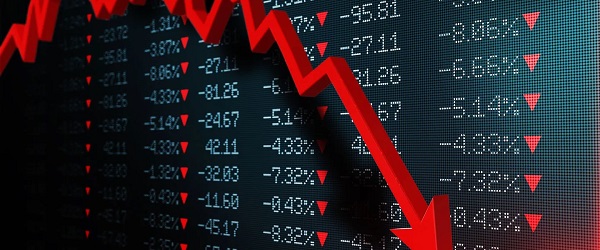Fraser Institute
Canada can solve its productivity ‘emergency’—we just need politicians on board

From the Fraser Institute
By Jake Fuss
Policymakers are slowly acknowledging the problem, but their proposed solutions are troubling.
According to Carolyn Rogers, senior deputy governor of the Bank of Canada, it’s time to “break the glass” and respond to Canada’s productivity “emergency.” Unfortunately, the country is unlikely to solve this issue any time soon as politicians are doubling down on the policy status quo rather than making sorely needed reforms.
Worker productivity—the level of output in the economy per hour worked—is a crucial indicator of a country’s underlying economic performance. When productivity increases, we not only increase our output and efficiency, but worker wages typically rise as well.
According to Statistics Canada, the country’s productivity dropped for six consecutive quarters before eking out a small gain in the final quarter of 2023. Rogers is right, this is an emergency, and it’s unsurprising that living standards for Canadians are falling alongside our productivity. Since the second quarter of 2022 (when it peaked post-COVID), inflation-adjusted per-person GDP (a common indicator of living standards) declined from $60,178 to $58,111 by the end of 2023—and declined during five of those six quarters, now sitting below where it was at the end of 2014.
Policymakers are slowly acknowledging the problem, but their proposed solutions are troubling. Federal Finance Minister Chrystia Freeland, for instance, recently emphasized the importance of making “investments in productivity and growth.” Yet, the federal government increased taxes on capital gains in its recent budget, which will disincentivize investment in Canada. Usually, when a politician says the word “investment” this is a fancy way of saying we need more government spending.
And in fact, more government spending appears to be the popular solution to every problem for most governments in Canada these days. Canadian premiers and the prime minister already support this approach in health care even though it’s been tried for decades. The result? In 2023, the longest wait times for health care on record despite having the most expensive system (as a share of GDP) among high-income universal health-care countries.
And now, these same policymakers are advocating for the same approach to boost productivity—that is, throw taxpayer money at the problem and hope it will somehow go away.
But there’s hope—governments have other options. For starters, governments from coast to coast could eliminate interprovincial trade barriers, which limit productivity improvements by (among other things) shielding inefficient local businesses from competition from businesses in other provinces. Governments also effectively prohibit the entry of foreign-owned competitors in crucial industries such as telecommunications and air travel. There’s less incentive for Canadian firms to innovate or improve when there’s no threat to shake things up.
Moreover, if governments reduced regulatory red tape and subsequent compliance costs, firms could allocate more resources towards training their workers, investing in equipment, and producing new and better products. And if governments reduced tax rates on families and businesses, they could make Canada more attractive to productive businesses, high-skilled workers and investors. Our current relatively high tax rates on capital gains, personal income and businesses income discourage capital investment and scare away the best and brightest scientists, engineers, doctors and entrepreneurs.
The Trudeau government, and other governments in Canada, seemingly want to spend their way out of our productivity emergency. While some level of government spending can help improve productivity, continued spending increases reallocate resources from the private sector to the government sector, which is by nature less productive. Governments should impose credible restraints (i.e. fiscal rules) on the growth of government spending to prevent this crowding out of private-sector investment.
There are plenty of ways Canada can boost productivity. We just need policymakers to be on board.
Author:
Business
Prairie provinces and Newfoundland and Labrador see largest increases in size of government

From the Fraser Institute
By Jake Fuss and Grady Munro
A recent study found that Canada has experienced one of the largest increases in the size of government of any advanced country over the last decade. But within Canada, which provinces have led the way?
The size of government refers to the extent to which resources within the economy are controlled and directed by the government, and has important implications for economic growth, living standards, and economic freedom—the degree to which people are allowed to make their own economic choices.
Too much of anything can be harmful, and this is certainly true regarding the size of government. When government grows too large it begins to take on roles and resources that are better left to the private sector. For example, rather than focusing on core functions like maintaining the rule of law or national defence, a government that has grown too large might begin subsidizing certain businesses and industries over others (i.e. corporate welfare) in order to pick winners and losers in the market. As a result, economic growth slows and living standards are lower than they otherwise would be.
One way to measure the size of government is by calculating total general government spending as a share of the economy (GDP). General government spending refers to spending by governments at all levels (federal, provincial, and municipal), and by measuring this as a share of gross domestic product (GDP) we can compare across jurisdictions of different sizes.
A recent study compared the size of government in Canada as a whole with that of 39 other advanced economies worldwide, and found that Canada experienced the second-largest increase in the size of government (as a share of the economy) from 2014 to 2024. In other words, since 2014, governments in Canada have expanded their role within the economy faster than governments in virtually every other advanced country worldwide—including all other countries within the Group of Seven (France, Germany, Italy, Japan, the United Kingdom, and the United States). Moreover, the study showed that Canada as a whole has exceeded the optimal size of government (estimated to fall between 24 and 32 per cent of GDP) at which a country can maximize their economic growth. Beyond that point, growth slows and is lower than it otherwise would be.
However, Canada is a decentralized country and provinces vary as to the extent to which governments direct overall economic activity. Using data from Statistics Canada, the following charts illustrate which provinces in Canada have the largest size of government and which have seen the largest increases since 2014.

The chart above shows total general government spending as a share of GDP for all ten provinces in 2023 (the latest year of available provincial data). The size of government in the provinces varies considerably, ranging from a high of 61.4 per cent in Nova Scotia to a low of 30.0 per cent in Alberta. There are geographical differences, as three Atlantic provinces (Nova Scotia, Prince Edward Island, and New Brunswick) have the largest governments while the three western-most provinces (Alberta, Saskatchewan, and British Columbia) have the smallest governments. However, as of 2023, all provinces except Alberta exceeded the optimal size of government—which again, is between 24 and 32 per cent of the economy.

To show which provinces have experienced the greatest increase in the size of government in recent years, the second chart shows the percentage point increase in total general government spending as a share of GDP from 2014 to 2023. It should be noted that this is measuring the expansion of the federal government’s role in the economy—which has been substantial nationwide—as well as growth in the respective provincial and municipal governments.
The increases in the size of government since 2014 are largest in four provinces: Newfoundland and Labrador (10.82 percentage points), Alberta (7.94 percentage points), Saskatchewan (7.31 percentage points), and Manitoba (7.17 percentage points). These are all dramatic increases—for perspective, in the study referenced above, Estonia’s 6.66 percentage point increase in its size of government was the largest out of 40 advanced countries.
The remaining six provinces experienced far lower increases in the size of government, ranging from a 2.74 percentage point increase in B.C. to a 0.44 percentage point increase in Quebec. However, since 2014, every province in Canada has seen government expand its role within the economy.
Over the last decade, Canada has experienced a substantial increase in the size of total government. Within the country, Newfoundland and Labrador and the three Prairie provinces have led the way in growing their respective governments.
Alberta
Alberta government records $8.3 billion surplus—but the good times may soon end

From the Fraser Institute
By Tegan Hill
According to last week’s fiscal update, the Smith government recorded a $8.3 billion surplus in 2024/25—$8 billion more than what the government projected in its original 2024 budget. But the good times won’t last forever.
Due largely to population growth, personal income tax revenue exceeded budget projections by $500 million. Business tax revenue exceeded budget expectations by $1.1 billion. And critically, thanks to relatively strong oil prices, resource revenue (e.g. oil and gas royalties) saw a $4.7 billion jump.
The large budget surplus is good news, particularly as it will be used to pay down government debt (which taxpayers must ultimately finance) and to invest for the future. But again, the good times could soon be over.
Recall, the Alberta government incurred a $17.0 billion budget deficit just a few years ago in 2020/21. And it wasn’t only due to COVID—until the recent string of surpluses, the government ran deficits almost every year since 2008/09, racking up significant amounts of debt, which still largely persists today. As a result, provincial government debt interest payments cost each Albertan $658 in 2024/25. Moreover, in February’s budget, the Smith government projected more deficits over the next three years.
Generally, Alberta’s fiscal fortunes follow the price of oil. Over the past decade, for example, resource revenue has been as low as $2.8 billion in 2015/16, while oil prices slumped to $US45.00 per barrel, and as high as $25.2 billion in 2022/23, when oil prices jumped to $US89.69 per barrel.
Put simply, resource revenue volatility fuels Alberta’s boom-and-bust cycle. In 2025/26, the West Texas Intermediate oil price will be a projected $US68.00 per barrel with projected resource revenue falling by $4.9 billion year-over-year.
But oil prices don’t need to dictate Alberta’s fiscal fortune. Indeed, if the Smith government restrains its spending, it can avoid deficits even when resource revenues fall.
There are plenty of ways to rein in spending. For instance, the government spends billions of dollars in subsidies (a.k.a. corporate welfare) to select industries and businesses in Alberta every year despite a significant body of research that shows these subsidies fail to generate widespread economic benefit. Eliminating these subsidies is a clear first step to deliver significant savings.
The budget surplus is undoubtedly positive for Albertans, but the good times could soon come to an end. To avoid deficits and debt accumulation moving forward, the Smith government should rein in spending.
-

 International2 days ago
International2 days agoCBS settles with Trump over doctored 60 Minutes Harris interview
-

 Crime1 day ago
Crime1 day agoBryan Kohberger avoids death penalty in brutal killing of four Idaho students
-

 Business2 days ago
Business2 days agoWhy it’s time to repeal the oil tanker ban on B.C.’s north coast
-

 Business2 days ago
Business2 days agoLatest shakedown attempt by Canada Post underscores need for privatization
-

 Energy2 days ago
Energy2 days agoIf Canada Wants to be the World’s Energy Partner, We Need to Act Like It
-

 Alberta2 days ago
Alberta2 days agoPierre Poilievre – Per Capita, Hardisty, Alberta Is the Most Important Little Town In Canada
-

 MxM News2 days ago
MxM News2 days agoUPenn strips Lia Thomas of women’s swimming titles after Title IX investigation
-

 COVID-191 day ago
COVID-191 day agoTop COVID doctor given one of Canada’s highest honors








